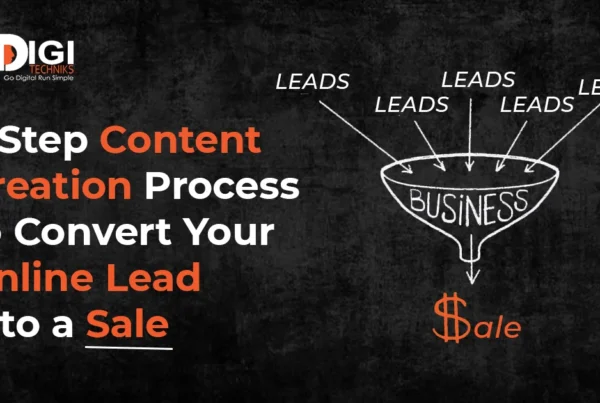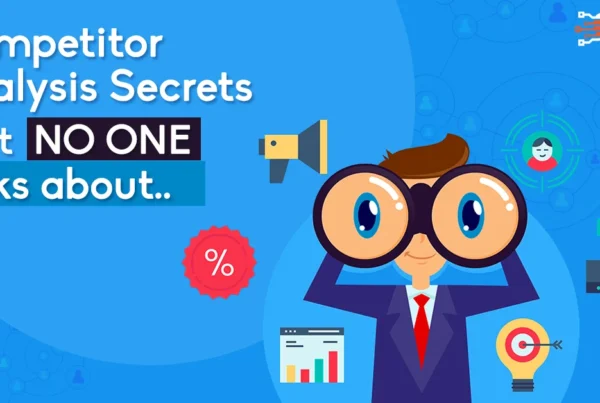
Tripwire offers are no longer limited to small, one-time products. They’ve evolved into a wider category of low-ticket strategies — from affordable mini-courses and workshops to freemium models and subscription-based hooks that attract prospects at scale.
This evolution reflects how customer expectations have shifted. Buyers today want to try before they commit, and businesses that use smart pricing on their entry-level offers build trust faster while moving people into their core products or high-ticket services.
By adapting your tripwire pricing approach to include these 2025-friendly models, you can stay ahead of competitors, convert more prospects, and maximize ROI from your digital funnels.
You probably know that a digital marketing funnel is key to acquiring customers online and odds are that you might have heard of ‘tripwire’. Many have also started realizing that in order to run sustainable businesses and to gain in the long run, we have to be givers. And that’s where the idea of tripwires comes in.
For those of you who may not know exactly what a tripwire is, what it does, and why it’s useful, let me give you a short primer.
What are Tripwires?
A tripwire is a low-priced irresistible offer, the purpose of which is to convert an audience into buyers. Because a tripwire is low in price, people are more likely to give it a try. Therefore, it allows your prospects to dip their toes in your business without having to spend big bucks. Then, once they see the value in that low-priced offer, they will be more likely to purchase the core product.
What a tripwire also tells you is that an audience is interested enough in your product/service to give you their contact information.
According to DigitalMarketer.com, “People who purchased tripwires were 10 times more likely to purchase their core offer.” That’s a pretty solid reason for including tripwires in your digital marketing funnel strategy
Related Article– 3 Step Digital Marketing Strategy for Customer Acquisition Funnel Validation
So, that’s the basic idea of tripwires that many of you might be familiar with. But do you know how to make it work for your business? What are the factors that you should consider when putting a price tag on your tripwire?
In my experience of working with digital marketers and business owners, I have seen most people making one mistake with regards to tripwires. And that is losing the sight of the money they spend on designing tripwires for their digital marketing campaigns.
Tripwire vs Low-Ticket vs Freemium (2025 Snapshot)
| Model | Typical Pricing Range | Example Offer | Best Use Case |
|---|---|---|---|
| Tripwire | ₹99 – ₹999 | eBook, mini-course, workshop | Quick conversions & building trust fast |
| Low-Ticket | ₹500 – ₹2,000 | Masterclass, toolkit, template | Higher perceived value & nurture buyers |
| Freemium | Free basic version | SaaS free plan, app trial | Growing a user base & long-term upgrades |
In 2025, many businesses are blending these models — for example, pairing a free trial (freemium) with a low-ticket webinar before introducing their core product or premium service.
Avoid the Most Common Tripwire Mistake
Most marketers play with tripwires thinking that they are not after making a profit at this point. After all, it’s okay to lose some money when giving away a low-priced offer to your audience because your plan is to encourage the customer to spend more money on your product eventually. Right?
Wrong. While you’re not looking to make a profit with tripwires, at no point, your business should give discounts by undergoing a loss. The irresistible offer should be given to the customer without harming the business revenue
So, how do you create a tripwire that doesn’t eat into your revenue? Let me explain in a step-by-step manner.
5 Steps For Tripwire Success
1. Create and collect
Design your lead magnet making sure it addresses few of the most pressing problems of your ideal customer and push this on social media. This could be in the form of a workshop, webinar, case study download, ebook download, a competition, or contest, to name a few.
Next, collect 100% of the data of the people who consumed your lead magnet or took any form of action. This data can be collected in the form of cookie or contact info
2. Set a rough discount
As a rule of thumb, the product/service you’re offering as a tripwire should be of a far higher value than the price you’re charging for it.
For instance, a Product or a Service that has a registration fee of Rs.10,000 can be offered at one fifth of its price at Rs.2000. Now that’s an offer that is hard to resist.
However, at this stage, we’re not looking to decide on the final pricing. This is just to get the process rolling for you to evaluate and come up with better pricing that’s irresistible and doesn’t incur loss for your business.
3. Compare
Let’s say you sold X number of tripwires in the previous step and made some money. Now it’s the time to do a comparison of the revenue that you got in step 2 with your overall expenses (Ad Cost & Team Cost) in step 1.
4. Analyze
Evaluate if the revenue is 0.8 to 2X of the money you spent on ads to promote your lead magnet and tripwire, then the cost of the tripwire is fair. If the revenue is less than 0.8, you either need to increase tripwire price or tweak Target Audience or Business Model or Customer Acquisition Funnel. Do whatever it takes to get the revenue is 0.8 to 2X of the money you spent on ads to promote your lead magnet and tripwire.
5. Rinse and repeat
Go back to step 1 and make all the necessary modifications and repeat until the revenue generated from the process comes to 0.8 to 2X of your ad expense. When you hit a number within this range, you can be sure that your tripwire is priced correctly. It will attract your audience without driving your business into losses.
Real-World Pricing Case Studies (2025)
1. Coaching Business
A business coach introduced a ₹299 “Productivity Hacks” webinar as a tripwire offer. Even though the price was minimal, the session positioned her as an authority. Over the next 30 days, 18% of attendees upgraded to her ₹25,000 one-on-one coaching program, proving how a low-cost entry can unlock high-ticket conversions.
2. SaaS Company
A SaaS startup launched a ₹199 starter plan that gave limited access to their analytics dashboard. This tripwire offer attracted small businesses hesitant to commit to a full subscription. Within three months, 27% of users upgraded to the enterprise plan, making the low-ticket entry point a predictable funnel driver.
3. E-commerce Store
An online skincare brand offered a ₹99 add-on trial pack at checkout. Customers could sample products before investing in full-size versions. This simple tripwire tactic increased the store’s average order value by 23% and boosted repeat purchase rates.
Each of these examples shows that the value of the tripwire lies in positioning, not profit. The goal is to lower resistance, create trust, and lead buyers toward your core offers.
Also, Read Why Businesses Should Not Invest In Content Marketing For Branding Process?
Conversion Insights (2024–25)
Recent industry reports highlight how low-ticket and freemium offers continue to perform strongly in 2025:
-
Tripwire offers priced between ₹99–₹999 typically convert 5–15% of cold leads into paying customers.
-
Low-ticket products such as mini-courses or masterclasses show conversion rates of 12–20%, especially when bundled with bonuses.
-
Freemium SaaS models record 20–30% upgrade rates when paired with effective onboarding and timely upsell prompts.
-
Businesses using a pricing ladder (Free → Tripwire → Core → High-Ticket) report up to a 40% increase in lifetime customer value compared to those relying on single-step sales.
These numbers make it clear: in 2025, the smartest businesses aren’t trying to profit from the tripwire itself. Instead, they’re using it as a trust-building gateway that drives long-term revenue.
Do you want to get a personalised 1-to-1 discovery session?
Book your 1-to-1 discovery call with us today!
FAQs
1. What is a tripwire offer in 2025?
A low-ticket, low-friction offer designed to convert cold prospects into first-time buyers and build trust for later, higher-value purchases.
2. How do I price a tripwire or irresistible offer?
Keep it irresistible (₹99–₹999) relative to the value delivered. Anchor to your core offer, and ensure the next step in your pricing ladder feels like a natural upgrade.
3. Tripwire vs low-ticket vs freemium — which should I choose?
Choose based on your model:
-
Tripwire: quick conversion + list building
-
Low-ticket: higher perceived value + nurturing
-
Freemium: fast user base growth + upsell potential
4. Should my tripwire be free or paid?
Paid tripwires qualify buyers and reduce churn. Free (freemium) works best for SaaS/apps when you have strong onboarding and upgrade prompts.
5. What are good examples of tripwire offers?
Mini-courses, workshops, toolkits, audits, starter plans, trial packs, or templates that solve a narrow, urgent problem.
6. What conversion rates can I expect in 2025?
Typical ranges: Tripwire 5–15%, Low-ticket 12–20%, Freemium upgrades 20–30% (with good onboarding and prompts).

Sharan Kulkarni
Sharan Kulkarni is a B2B Lead Generation Specialist and author of ROI Decoder, with 10+ years’ experience helping SaaS, IT, and service firms generate predictable qualified leads. He leads Digitechniks’ outreach strategies across LinkedIn, cold email, and SEO. Connect with Sharan on LinkedIn



